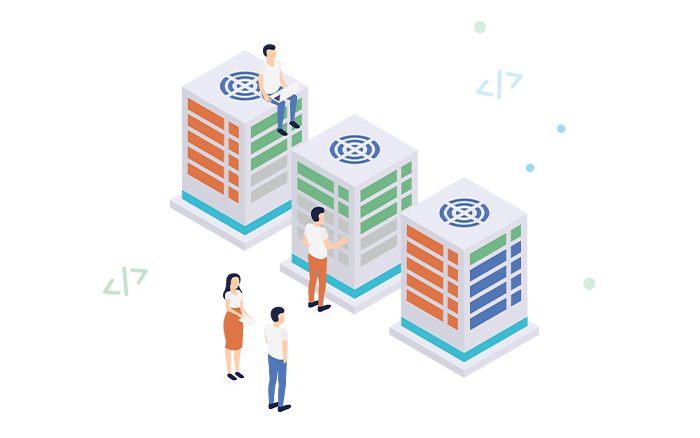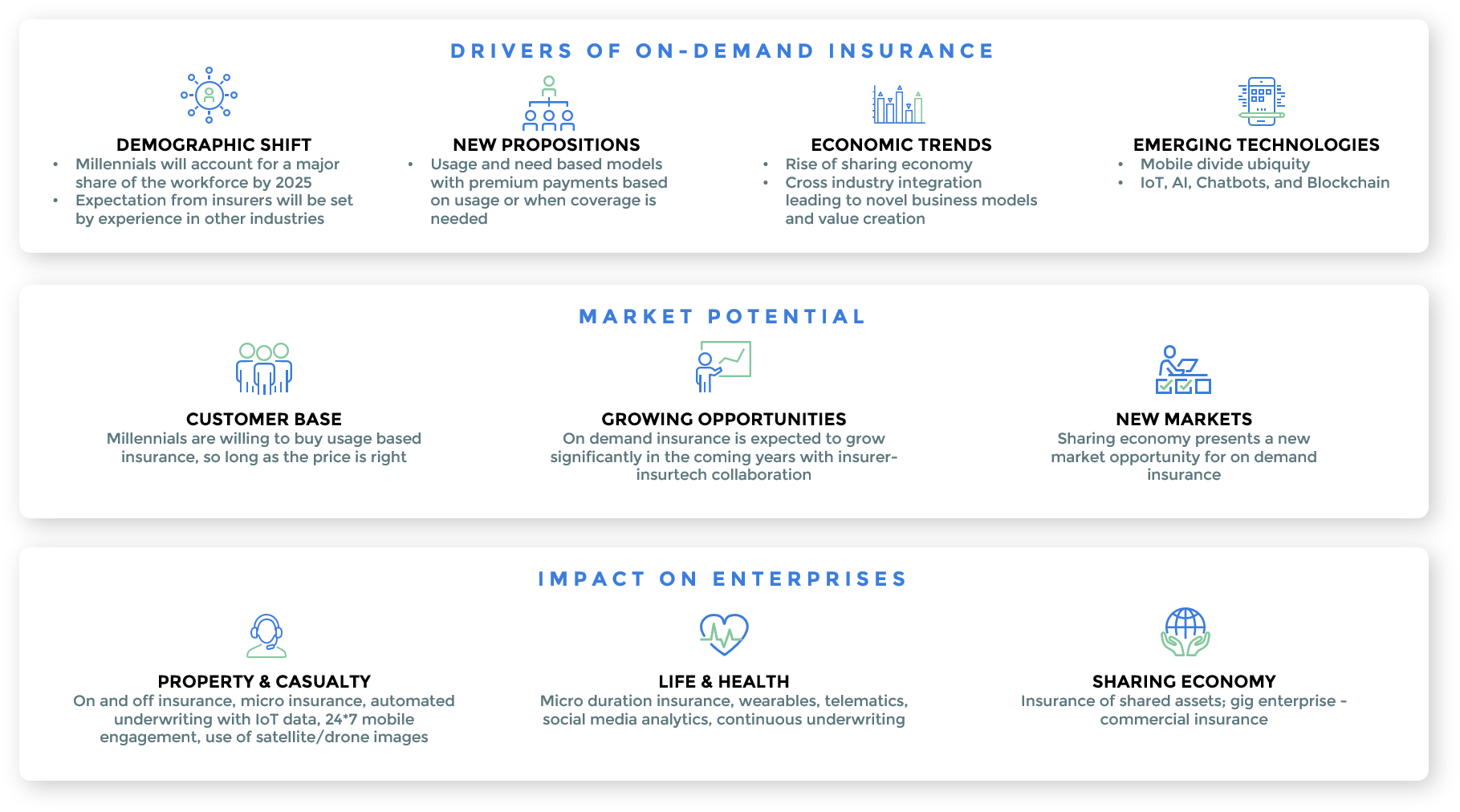
Read on to find out what’s behind the rise of on-demand insurance in the age of personalization, what it means for insurers to innovate and in which aspects, what remains of the agent, and how insurers can succeed in the microinsurance model distribution via partnerships.
Gone are the days when technology was engineered to fit the business model. Now, tech becomes the threat that inspires… the birth of on-demand insurance models.
Traditionally, the agent has been most integral to the customer experience. While juggling the need to be customer-centric, the process tends to be ladened with paperwork and manual processes. The ability of the agent to customize the policy for the customer is limited to accommodate the diverse needs of every one of your customers.
The world today is hyper-connected, and technological innovation has enabled real-time service delivery in many aspects of our lives- from banking, commuting, shopping to getting food. That said, your potential customers would be expecting the same standards when it comes to getting insurance. As we get better-informed and engaged consumers among us, this would have heightened their expectations around the extent and quality of services that you can provide.
On-demand insurance enables customers to purchase policies without directly interacting with the agent. At the comfort of their personal device, customers have the ability to turn their coverage on and off, pay as they go by checking what they want to be covered, and submit their claims- all on the App with a click or a swipe.
This business model leverages cutting-edge innovations such as the internet of things (IoT), artificial intelligence (AI), predictive modeling and big data to deliver nearly instantaneous risk assessment, quick policy issuance, and seamless claims handling.
On-demand insurance can be classified into pay per mile, pay per day to Personal Accident (PA) insurance. For example, for pay per mile insurance, the rates are based on the customer’s actual driving habits and insurance providers may use telematics to track how far the customer drives. Such insurance can offer the same coverage types as the conventional car insurance, as well as to allow customers to check the coverages they want to opt for.

What’s driving on-demand insurance? (Source: The Digital Insurer)
The rise of this model has been most prominent for microinsurance policies. Microinsurance refers to coverage of smaller risks via rapid underwriting in products like travel or event insurance. This type of insurance enables the customer to cherry-pick features that offer the right amount of financial protection for the shortest period of time.
In the aspects of life and health, microinsurance is aimed at providing a safety net for the low-income market at very minimal cost to avoid debt traps that may imperil their livelihoods. That said, microinsurance often entails very low premiums.
According to the Boston Consulting Group, waiting time typically consumes at least 95% of insurance application processes. Coupled with the diverse and fast-changing needs of some consumer segments in society, technology plays an important role in closing the gap.
| “Digital natives” generation | Gig economy workers (i.e. freelancers, independent contractors) | Low-income market |
| ● Expects rapid delivery of goods and services as they are used to it.
● Rising disposable incomes allow them to look at coverages beyond basic life and health. ● Need to personalize insurance given their highly-diverse individual lifestyles → ‘One size fits all’ cover will not suffice. ● Social media and influencer marketing will play a key role in marketing insurance. |
● Needs are constantly shifting, so does their protection.
● Tend to be tech savvy and self-directed consumers → Expects to get insurance in a simpler fashion. ● Digital on-demand insurance that can be turned on and off from an App matches their work schedule. ● COVID-19 is boom time for gig workers as more companies are turning to “agile” working practices → Premiums should protect the company and also match this short-term setup. |
● Especially in the rural area, on-demand insurance is the most viable channel for the poor to gain access to insurance.
● Vast majority of them work in the informal economy → Lack of systemic mechanisms to reach them. |

Distribution Startups Backed By Insurance Providers (Source: IAIS’ FinTech Developments in the Insurance Industry, Feb 2017)
Insurance providers have been making unprecedented investments in startup technology. Instead of thriving on the traditional supplier-buyer relationship, insurtech startups and insurance providers are increasingly operating within new partnership arrangements to enable the latter’s value proposition.
According to Michael Costonis, Chief Operations Officer, CNA Insurance, here are several business models that can support an effective microinsurance strategy:
| Partnership Model | Description | Pros | Cons |
| Partner-agent | Most common model: Partners working together to develop products. The insurer takes on risk, and the startup distributes the product. | ● Leverages on the insurer’s existing infrastructure and reputation.
● Allows insurers to reduce costs and improve speed to market. |
● Extra work as insurers need to provide training and do due diligence.
● Insurers need to pick their partners wisely and manage the relationship intensively. |
| Public-private partnership | Quick way for governments to establish microinsurance in their countries, by subsidizing premiums or underwriting catastrophe risk. | ● Government paves way for insurers to establish their products and build their business in the developing country. | ● Subsidization can make it difficult for insurers to get a real sense of the viability of their products.
● Insurers must also prepare for the possibility of subsidies being reduced or withdrawn. |
| Direct | Insurer develops and distributes microinsurance products directly to the market | ● Greater control and retain ownership of their customers. | ● Distribution and administrative costs can be significant.
● Insurers need to have a keen understanding of the target market, its local community dynamics and of microinsurance itself. |
Some principal areas where insurance providers are partnering with insurtech startups include but are not limited to:
Ultimately, the customer is at the centre of innovation. Given how quickly the insurance value chain is evolving- from product development to distribution which requires work from its respective expertise, partnerships between insurance providers and technology will be the future of the insurance industry.